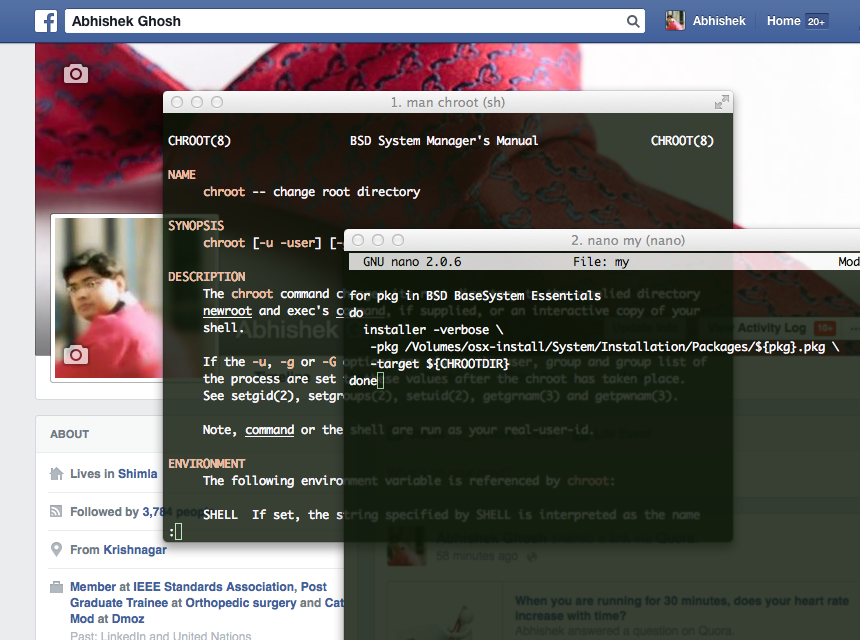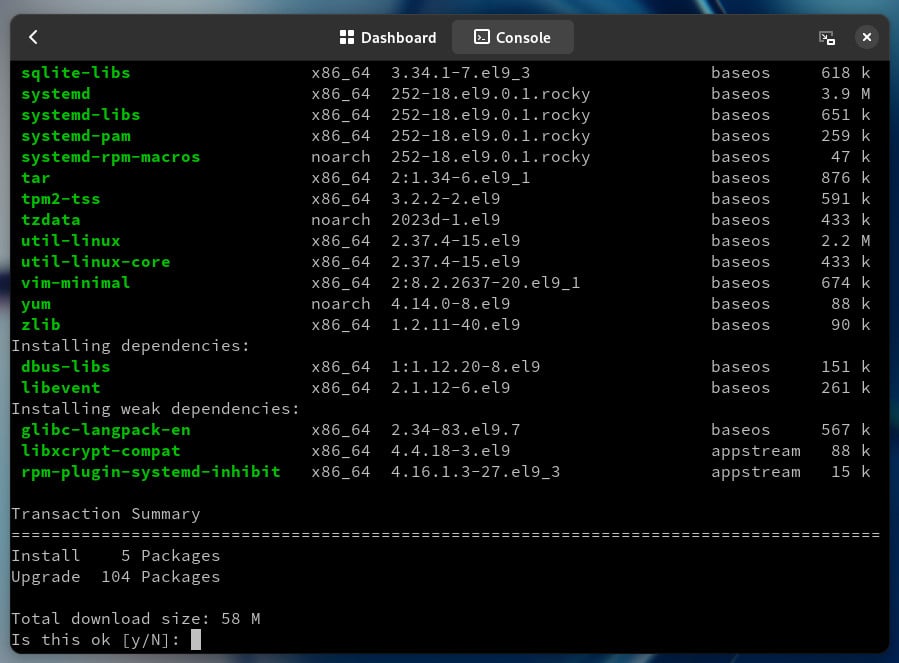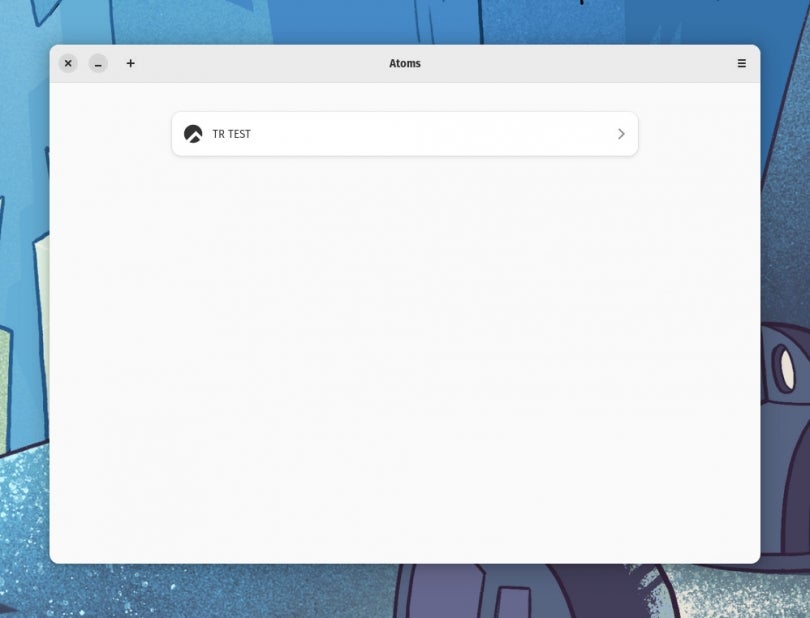Introduction to Chroot

Chroot, short for “change root,” is a powerful Linux system call that allows a user to create a temporary isolated environment within a running system. This isolated environment effectively changes the root directory of the current process, confining it to a specific directory structure and preventing access to files and directories outside that boundary. Think of it as a controlled sandbox for running programs or services.
This technique is commonly used for security, development, and testing purposes, isolating potentially harmful or experimental code from the rest of the system. By restricting the access of a process to a specific subset of the filesystem, chroot jails can help mitigate the risk of malicious code or accidental damage to the system.
Purpose and Use Cases
Chroot is frequently employed to run untrusted software, test software in a contained environment, and create secure environments for specific services. For instance, a web server can be run within a chroot to prevent unauthorized access to other parts of the system. Furthermore, chroot jails can be used to confine specific users to a limited portion of the filesystem, enhancing security and limiting the potential damage from user errors or malicious activities. It’s also valuable for deploying software packages that may have conflicting dependencies or require specific versions of libraries.
Limitations of a Standard Chroot
While chroot provides a basic level of isolation, it’s not a foolproof security solution. A standard chroot jail is vulnerable to several attacks, primarily those that exploit the limitations of the underlying operating system. For example, a user with sufficient privileges within the chroot jail can still potentially compromise the host system. Further, a clever attacker could potentially bypass chroot restrictions through various means, including exploiting vulnerabilities in the jail’s configuration or leveraging other system weaknesses. The lack of robust control over network access and processes further contributes to its limitations. Crucially, standard chroot does not provide isolation for processes running within the chroot environment; it only changes the perceived root directory for the current process.
Common Misconceptions about Chroot
A common misconception is that chroot provides absolute security. In reality, it offers a degree of isolation but is not an impenetrable barrier. Furthermore, some believe that chroot can completely prevent any interaction with the host system. This is incorrect, as the jail can still be compromised if the host system is compromised. Another misunderstanding is that chroot is a replacement for robust security measures. While useful, chroot should be combined with other security measures, like strong passwords, regular updates, and intrusion detection systems, to create a more comprehensive security posture.
Standard Chroot vs. Sophisticated Jailing Systems
| Feature | Standard Chroot | Sophisticated Jail |
|---|---|---|
| Filesystem Isolation | Changes the root directory for a single process. Limited to the chrooted directory and its subdirectories. | Provides comprehensive isolation of the entire filesystem. Prevents access to files outside the defined boundaries. |
| Process Isolation | Does not isolate processes running within the chroot environment. | Isolates processes running within the jail, preventing interaction with processes outside the jail. |
| Network Access Control | Limited network access control. Typically relies on user permissions or specific configurations. | Offers granular control over network access, including firewall rules and network interfaces, preventing communication with unauthorized hosts. |
| Security Auditing | Limited auditing capabilities. | Enhanced auditing capabilities to track activities within the jail, providing insights into potential security breaches. |
| Complexity | Relatively easy to set up and manage. | More complex to set up and manage due to the increased level of isolation and control. |
Understanding Bypassing Mechanisms: How To Bypass Chroot

Chroot jails, while providing a layer of security, are not impenetrable. Vulnerabilities in their implementation can be exploited by attackers, allowing them to escape the restricted environment. Understanding these vulnerabilities and the techniques used to bypass them is crucial for improving the security posture of systems using chroot.
A successful chroot bypass often involves exploiting weaknesses in the way the jail is configured, or vulnerabilities in the underlying operating system. This can manifest in various ways, from improper permissions management to flaws in the system calls used to create and maintain the jail. Attackers can leverage these vulnerabilities to gain unauthorized access to the resources within the jail or the host system.
Common Chroot Vulnerabilities
Improperly configured file system permissions are a common vulnerability in chroot implementations. If critical system files or directories within the jail are accessible with excessive permissions, attackers can potentially modify or gain control over the environment. In addition, insufficiently restricted access to essential system tools or libraries can provide avenues for exploitation.
Exploitation Techniques
Attackers might leverage vulnerabilities through various techniques, including:
- Exploiting shell vulnerabilities: Malicious code embedded within a shell or command-line interpreter can provide attackers with access to restricted areas within the chroot environment. Examples include command injection attacks, where attackers can execute arbitrary commands.
- Manipulating symbolic links: Attackers can potentially use symbolic links to redirect processes or access files outside the intended chroot directory. This circumvents the intended restrictions of the chroot.
- Exploiting vulnerabilities in system calls: Some system calls used in chroot implementations might have inherent flaws. Attackers can exploit these to bypass the security constraints. For example, a buffer overflow in a system call could allow arbitrary code execution, leading to complete compromise.
- Using network services: Attackers can exploit network services running within the chroot environment to gain unauthorized access. Vulnerabilities in these services can be leveraged to escalate privileges or obtain sensitive information.
Examples of Bypassing Techniques
A common example of a chroot bypass involves exploiting a flawed shell. An attacker could craft an input that triggers a command injection vulnerability within the shell. If the shell within the chroot environment is vulnerable, the attacker can execute commands that are not restricted to the jail. This could lead to accessing files, modifying system settings, or even gaining root access within the host system.
Comparison of Bypassing Methods
| Method | Description | Effectiveness | Complexity |
|---|---|---|---|
| Exploiting Shell Vulnerabilities | Leveraging flaws in the shell to execute arbitrary commands. | High | Medium |
| Manipulating Symbolic Links | Redirecting processes or accessing files outside the chroot directory using symbolic links. | Medium | Low |
| Exploiting System Calls | Taking advantage of vulnerabilities in system calls to execute arbitrary code. | High | High |
| Exploiting Network Services | Targeting vulnerabilities in network services within the chroot. | Medium to High | Medium to High |
Bypassing Techniques – Specific Examples

Exploiting vulnerabilities within a chroot environment requires a multifaceted approach. Understanding the specific implementation of the chroot and the underlying operating system is crucial for developing effective bypass strategies. This section delves into practical techniques for exploiting vulnerabilities in the chroot’s filesystem, manipulating environment variables, leveraging compromised processes, and utilizing network access.
Exploiting Vulnerabilities in the Chroot’s Filesystem
A compromised filesystem within the chroot can provide attackers with various entry points. A common vulnerability involves improperly configured permissions or symbolic links that allow access to sensitive files or directories outside the intended chroot boundaries. This might include directories with write permissions for unintended users or symbolic links that point to files outside the chroot. Successful exploitation of such vulnerabilities can grant elevated privileges within the chroot environment, allowing the attacker to execute arbitrary code. Another critical area of concern is the presence of vulnerable applications within the chroot. If these applications have known vulnerabilities, attackers can potentially exploit them to gain unauthorized access or execute malicious code.
Manipulating the Chroot’s Environment Variables
Environment variables play a significant role in shaping the behavior of processes within the chroot. Manipulating these variables can be a powerful technique for bypassing security restrictions. For example, altering the PATH environment variable could redirect the shell to execute malicious commands instead of intended ones. Similarly, modifying variables that control the execution path or access to specific resources could grant access to otherwise restricted areas. This technique relies on the chroot’s configuration and how it handles environment variables. Careful examination of the chroot’s configuration file, as well as the behavior of the shell, is crucial for identifying potential vulnerabilities in how environment variables are handled.
Exploiting a Compromised Process Within the Chroot
If an attacker gains control of a process inside the chroot, they can leverage its privileges to escalate their access. For example, a compromised web server process running with elevated privileges can be used to execute arbitrary commands. Exploiting a compromised service can also give access to sensitive data or system resources. Understanding the dependencies and permissions of processes within the chroot is crucial to identify potential avenues for exploiting compromised processes. This involves analyzing process trees and dependencies to find pathways for escalation of privileges.
Leveraging Network Access from Within the Chroot
Network access within a chroot environment can be exploited to bypass security measures. A compromised service or application might have a connection to an external server or network resource. If the chroot’s configuration allows outbound network connections, an attacker can potentially use this access to download malicious payloads or communicate with a command-and-control server. This could include the exploitation of a vulnerable service on a compromised machine to initiate a network connection, allowing for further exploitation outside the chroot environment. It is essential to understand the chroot’s networking configuration to identify and exploit any potential vulnerabilities.
Step-by-Step Procedure for Bypassing a Specific Chroot Implementation
This example focuses on a chroot implementation that uses a specific mount point and permission settings. The exact steps will vary depending on the implementation. A crucial step in the process is identifying the specific mount points and permission configurations of the chroot. This involves analyzing the chroot configuration file, the filesystem structure, and the permissions assigned to files and directories.
- Identify the chroot’s mount point and relevant permissions.
- Analyze the chroot’s filesystem structure to determine potential vulnerabilities in file permissions or symbolic links.
- Attempt to manipulate environment variables to gain access to restricted areas or execute malicious commands.
- If possible, identify and exploit a compromised process within the chroot to elevate privileges.
- Examine the chroot’s network configuration to identify any vulnerabilities that could be exploited for network access.
- Develop and execute a payload that exploits the identified vulnerability to gain control of the system.
Chroot Bypass Tools
Tools for bypassing chroot implementations vary in their functionality and capabilities. Understanding their features and limitations is crucial for effective use.
| Tool | Feature | Limitation |
|---|---|---|
| Croot | Automated chroot bypass | Limited to specific chroot implementations |
| ChrootExploit | Exploits common chroot vulnerabilities | Requires knowledge of target chroot configuration |
| ChrootScanner | Automated scanning for chroot vulnerabilities | May produce false positives |
Mitigation Strategies

Mitigating chroot vulnerabilities requires a multifaceted approach encompassing secure configuration, robust environment hardening, and proactive security audits. Effective mitigation strategies are crucial to prevent exploitation and maintain the integrity of the system. By implementing these measures, organizations can significantly reduce the risk of successful chroot bypass attempts.
A well-defined strategy for hardening chroot environments should encompass a range of preventative measures, from carefully configuring the chroot filesystem to securing the surrounding host environment. The key is to anticipate potential attack vectors and proactively implement defenses to thwart them. A proactive approach is essential to preventing exploitation and maintaining the integrity of the system.
Secure Chroot Configuration
Proper configuration of the chroot environment is fundamental to its security. This involves careful selection and limitation of the filesystems and utilities available within the chroot. By controlling access to system resources, the potential attack surface is significantly reduced.
- Restricting File System Access: Configuring the chroot to mount only necessary filesystems and directories prevents access to sensitive information or unintended system components. This is a fundamental step in minimizing the potential attack surface. For example, mounting only the required user directories and essential system utilities inside the chroot, while excluding the `/etc` directory, can prevent unauthorized access to critical system files.
- Limiting Available Utilities: Only essential utilities should be available within the chroot. Removing unnecessary tools reduces the potential for exploitation. For instance, excluding compilers or shell utilities can hinder attempts to execute malicious code.
- Restricting Network Access: If network access is required, use a carefully configured network interface that only allows necessary traffic. This is critical for isolating the chroot environment from potential network attacks.
Hardening the Surrounding Environment
Protecting the host environment where the chroot resides is equally critical. Compromising the host could lead to chroot bypass, regardless of how well-configured the chroot itself is.
- Strong User and File Permissions: Implement strong user and file permissions to limit the impact of potential compromises within the host. Restricting access to the chroot directory and related processes can prevent unauthorized modification or access.
- Network Segmentation: Isolate the chroot host from other systems on the network. Segmentation can contain any potential breaches and prevent lateral movement.
- Regular Security Updates: Keeping the host operating system and related applications up-to-date with the latest security patches is crucial to address known vulnerabilities.
Preventing Common Bypassing Techniques
Understanding common bypassing techniques allows for the development of targeted mitigation strategies.
- Regular Security Audits: Regular security audits of the chroot environment and host system are essential to detect potential vulnerabilities and misconfigurations. This allows for proactive patching and improvement before a vulnerability can be exploited.
- Monitoring System Logs: Monitoring system logs for suspicious activity is critical. This can help identify attempts to bypass the chroot environment or other malicious activity.
Hardening Techniques Comparison
| Technique | Description | Effectiveness |
|---|---|---|
| Restricting File System Access | Mounting only necessary filesystems and directories. | High – Reduces potential attack surface. |
| Limiting Available Utilities | Removing unnecessary tools. | Medium – Dependent on the tools available. |
| Strong User and File Permissions | Implementing strict access controls. | High – Prevents unauthorized access. |
| Regular Security Audits | Proactive vulnerability identification and patching. | High – Early detection prevents exploitation. |
Case Studies

Real-world chroot bypass incidents highlight the vulnerabilities of this isolation mechanism and the importance of robust security practices. Analyzing these incidents provides valuable insights into potential attack vectors and effective mitigation strategies. Understanding how attackers exploit chroot bypasses is crucial for developing stronger defenses.
A crucial aspect of examining chroot bypass incidents is understanding their impact and consequences. These consequences can range from data breaches and system compromise to significant financial losses and reputational damage. A thorough analysis of these incidents must account for the scope and severity of the damage, allowing for better preventative measures and incident response strategies.
A Hypothetical Chroot Bypass Incident
This case study presents a hypothetical scenario to illustrate the methodology of analyzing security breaches related to chroot. A web server, utilizing a chroot environment to isolate user applications, experienced unauthorized access. Attackers exploited a known vulnerability in the chroot implementation, gaining root privileges within the isolated environment. This allowed them to access sensitive data and potentially manipulate system configurations.
Impact and Consequences
The impact of this hypothetical breach includes data exfiltration, modification of critical system files, and disruption of service. The consequences could extend to financial losses if sensitive customer data was compromised, and reputational damage if the incident led to public disclosure. In real-world scenarios, these consequences can be significantly more severe, depending on the specific nature of the data accessed and the scope of the attack.
Comparative Analysis of Bypassing Approaches, How to bypass chroot
Several approaches can be used to bypass chroot. A common technique involves exploiting vulnerabilities in the chroot implementation itself. This might include issues with the way the environment is set up or maintained. Other approaches may involve manipulating the file system or exploiting limitations in the underlying operating system. A comparative analysis should evaluate the effectiveness, sophistication, and commonality of each method. Understanding the common approaches allows for targeted security enhancements.
Methodology for Analyzing Security Breaches
A structured methodology for analyzing chroot bypass breaches involves several key steps. First, the incident is documented, recording the affected systems, date and time of the breach, and nature of the compromise. Second, the attack vectors are identified, focusing on how the attackers gained access. Third, a root cause analysis is conducted to pinpoint the specific vulnerabilities exploited. Finally, preventative measures are identified and implemented to prevent similar breaches in the future.
Learning from Real-World Incidents
Learning from real-world incidents is paramount in strengthening security postures. Examining past incidents allows security teams to recognize common patterns and attack vectors, enabling them to proactively address vulnerabilities. Understanding the motivations and tactics of attackers is crucial in adapting defenses and developing incident response strategies.
Incident Response Methodology
| Step | Description | Outcome |
|---|---|---|
| Identification | Detect the breach, identify affected systems, and contain the damage. | Confirmation of the breach and affected systems. |
| Containment | Isolate compromised systems to prevent further spread of the attack. | Prevention of further damage and data exfiltration. |
| Eradication | Remove malicious code, restore affected systems to a known good state, and patch vulnerabilities. | Restoration of compromised systems and elimination of vulnerabilities. |
| Recovery | Return affected systems to normal operation and implement improved security controls. | Improved security posture and return to normal operations. |
| Post-incident review | Analyze the incident, identify root causes, and implement preventative measures. | Proactive measures to prevent future breaches. |
Advanced Topics (Optional)

Chroot, while a valuable security mechanism, is not impenetrable. Understanding the vulnerabilities within the kernel and specific chroot implementations is crucial for robust security. This section explores advanced considerations, including kernel exploits, advanced bypass techniques, and securing custom chroot implementations.
Advanced techniques for exploiting chroot implementations often involve leveraging weaknesses in the underlying operating system kernel. A deeper understanding of these vulnerabilities, combined with knowledge of specific chroot implementations, allows for targeted attacks. This section also delves into how the evolution of chroot bypass methods is influenced by the development of new kernel vulnerabilities and improvements in security practices.
Kernel Vulnerabilities and Chroot Security
Kernel vulnerabilities play a significant role in chroot bypass attacks. Exploiting these vulnerabilities can grant attackers access beyond the restricted environment of the chroot jail. The severity of the impact depends on the specific vulnerability and the configuration of the chroot implementation.
- Kernel vulnerabilities can lead to arbitrary code execution within the chroot environment or even escalate privileges beyond the confined space. This is often facilitated by vulnerabilities in file system handling or process management within the kernel.
- Exploits leveraging kernel vulnerabilities can bypass chroot protections, granting unauthorized access to resources. This highlights the importance of keeping the kernel up-to-date with security patches.
Advanced Chroot Bypass Techniques
Advanced chroot bypass techniques involve exploiting specific characteristics of particular chroot implementations. These methods often leverage intricate interactions between the chroot environment, the kernel, and the file system.
- Exploiting specific file system implementations can allow attackers to gain control over the chroot environment. For example, vulnerabilities in how symbolic links are handled within the chroot jail might allow an attacker to manipulate the filesystem and access resources outside the intended boundaries.
- Techniques like manipulating the process table or exploiting race conditions in kernel modules are often employed in sophisticated bypass attacks. These attacks can be more challenging to detect and mitigate, as they often rely on complex interactions between the kernel and the chroot environment.
Evolution of Chroot Bypass Methods
Chroot bypass methods are constantly evolving, mirroring advancements in exploit development and security measures.
- The evolution of bypass methods reflects the ongoing arms race between attackers and defenders. As new security protections are implemented, attackers devise new methods to overcome them.
- Research into the evolution of bypass methods highlights the dynamic nature of security threats. Understanding these trends is crucial for implementing robust security measures.
Security Considerations for Containerized Environments
Containerized environments introduce unique security considerations when using chroot.
- Containerization often uses chroot-based isolation, but the interaction with other containers or the host system must be carefully considered.
- The shared kernel and network resources between containers can create avenues for attack if not properly secured.
Securing a Custom Chroot Implementation
Securely implementing a custom chroot environment requires careful consideration of multiple factors.
- Comprehensive input validation and output sanitization are critical to prevent vulnerabilities like buffer overflows or command injection.
- Employing secure defaults and restricting access to system calls are essential in limiting the impact of potential vulnerabilities.
Impact of Kernel Vulnerabilities on Chroot Security
The table below Artikels the impact of various kernel vulnerabilities on chroot security.
| Vulnerability | Impact | Mitigation |
|---|---|---|
| Buffer Overflow | Allows arbitrary code execution within the chroot environment, potentially leading to escalation of privileges. | Input validation, secure coding practices, and kernel patches. |
| File System Manipulation | Allows attackers to access or modify files outside the intended chroot boundaries. | Robust file system access controls, restricted file system mounts. |
| Process Management Flaws | Allows attackers to bypass restrictions and gain control over processes within the chroot environment. | Proper process isolation mechanisms, kernel updates. |
FAQ Corner
How to bypass chroot – What are some common misconceptions about chroot?
Many believe chroot is a foolproof security measure, but it’s not. Standard chroot implementations can be bypassed by exploiting vulnerabilities in the implementation or environment. The effectiveness of a chroot depends heavily on its configuration and the surrounding system’s security.
What are some real-world examples of chroot bypass incidents?
Unfortunately, specific real-world examples aren’t provided in the Artikel for this document, making it impossible to give real-world examples. However, the guide covers theoretical scenarios and general vulnerabilities, highlighting the potential for real-world attacks.
What tools can be used to bypass chroot?
Specific tools aren’t named in the Artikel, so no tools can be listed. However, the guide explores general bypassing techniques and methodologies that might be employed by tools.